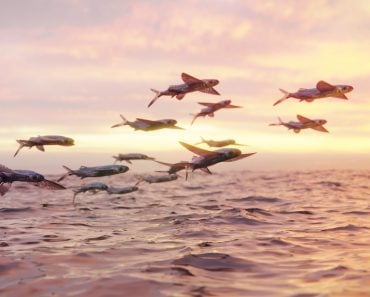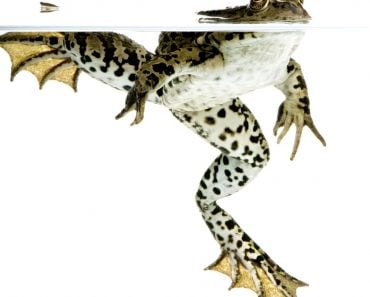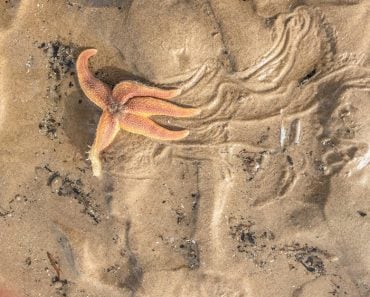Table of Contents (click to expand)
Millions of years ago, one fish walked onto land and never looked back. However, some fish today live as in-betweeners, living, breathing and even walking both in water and on land.
What’s the first thing that comes to mind when you think of fish? It’s probably not a fish using its fins as legs to walk on land!
Fish have a body that makes swimming a breeze, but they have actually adapted to “walk” at least five times in the course of evolution. These adaptations that the ancestors of fish went through led to life on land as we know it.
Some fish today still live as in-betweeners, living, breathing and even walking both on land and in water.
Recommended Video for you:
Mudskippers
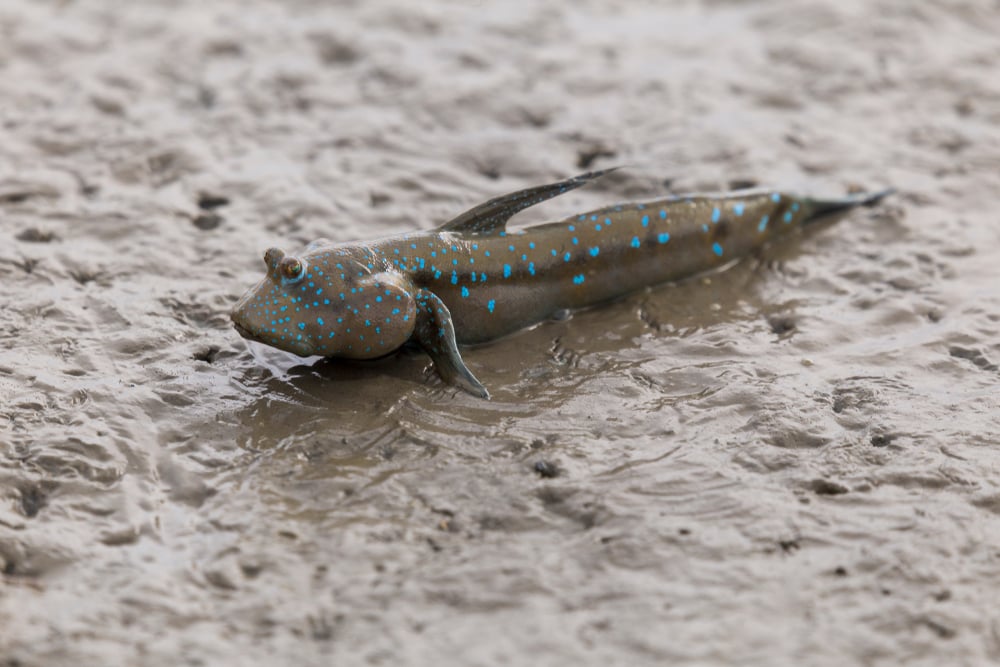
Mudskippers are amphibious fish that are able to survive on land for long durations. To survive on land, these fish have adapted a new way to breathe, move, and visualize the world. They are so comfortable on land that they tend to spend the majority of their lives there.
The presence of shoulder joints and strong, well-developed pectoral (lateral) fins give these creatures the freedom to walk and jump up to 2 feet in the air.
The freedom of movement between land and water helps the mudskippers regulate their body temperature. A mudskipper can choose to bask in the midday sun or plunge into chilly waters. When on land, they breathe the air trapped in their gill chambers and respire through their cutaneous skin, because their skin and mouth can both function as organs that provide oxygen to their bodies. Moist habitats will make the breathing process much more efficient. That’s why most mudskippers thrive in tropical and subtropical areas of Africa, Australia, and Asia, particularly in muddy marshes and rivers.
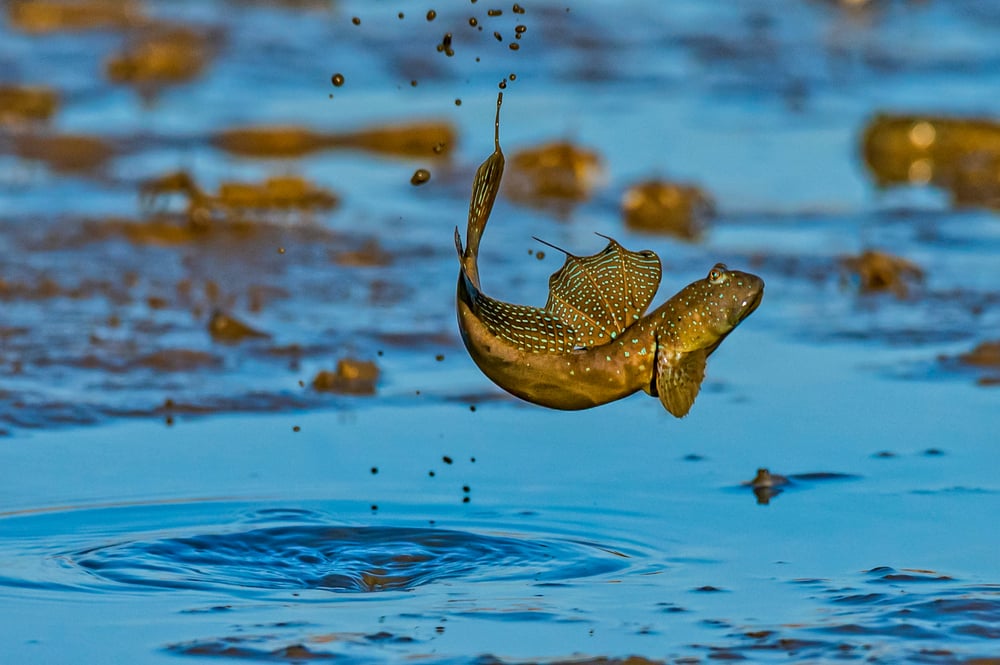
Like us, they also see the world better when not immersed in water. Small folds of the skin beneath their eyes act as water cups and prevent their air-exposed eyes from drying up.
Interestingly, they exploit their strong fins to dance on land in order impress potential mates. Even though these fish have adapted to live and walk on land, they are still susceptible to the dangers of living on land, such as being eaten by predators or drying out.
In order to stay moist, lay and care for their eggs, and avoid getting eaten, they build burrows.
The Walking Catfish
In Florida, a catfish taking a stroll is a common sight.
They take to the streets using their spine-like pectoral fins. Compared to most fish, they have relatively long and lobed dorsal (upper) and anal (posterior) fins that span a great length of their elongated bodies. This modification helps them crawl on land.
The protective slimy covering that lines their skin also proves beneficial to them outside of water. On a molecular level, slime can control the interactions that take place between the fish’s body and the surrounding water. It enables the required chemical molecules (including water) to move in and out of the fish’s body. The fish also house a special gill structure and a large accessory breathing organ that eases the whole “breathing out of water” process.
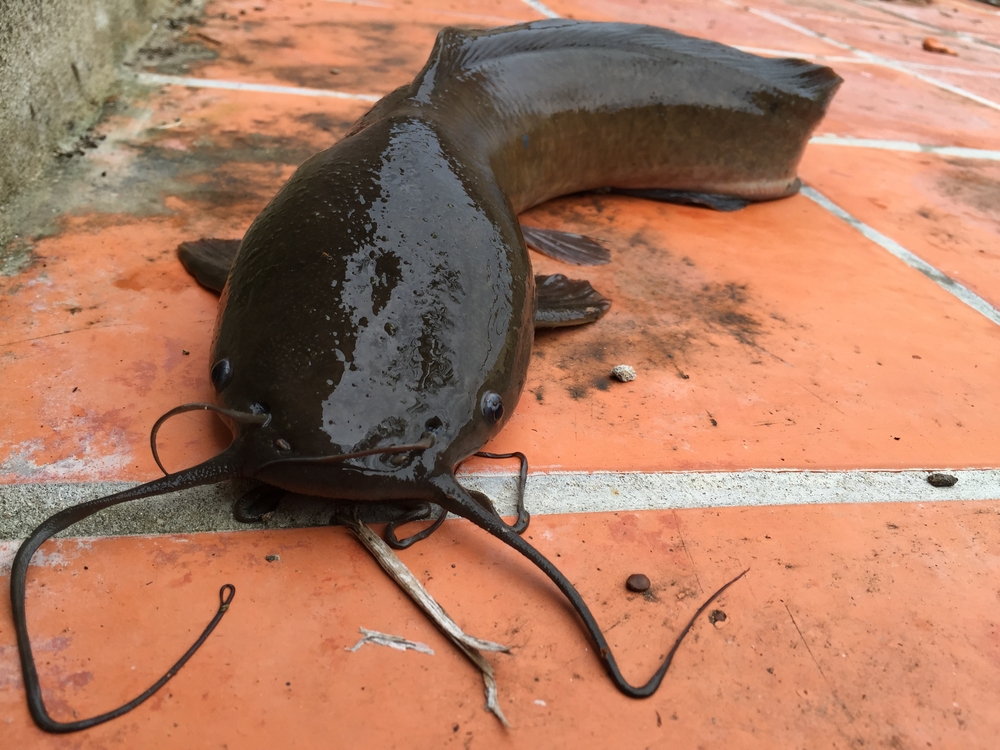
But why do they seek out land in the first place? They simply like to search for more resource-rich water bodies, and a little bit of land doesn’t stand in the way of their migratory routes.
The Bichirs
These fish have a body that resembles that of our tetrapod (four-legged) ancestors. It also has both lungs and gills to cater to its amphibious lifestyle.
Taking note of these features, scientists tried to see if a species of these fish, the Senegal Bichir, could walk on land.
Some bichirs were forced to grow on land to determine if they would start to develop distinct organs or processes from their river-dwelling counterparts, and boy did they deliver! Some of the skull bones, collar bones, and shoulder areas of these creatures became quite modified. The gills also showed changes, becoming much larger. The neck gained more flexibility to accommodate land-based feeding methods. All of these evolutionary adaptations have made walking on land much easier.
Honorary Mentions: Seabed Walkers
Not all fish that walk do so on land. A few possess strong enough pectoral fins and related bone modifications that allow them to take a stroll on the ocean floor instead.
The batfish, sporting a startling red lip, are not good swimmers. To compensate for their lack of swimming skills, they resort to walking on their pseudo-legs, which include the pectoral and pelvic (lying posterior to the pectorals) fins. It mainly uses its pectorals to waddle on the seabed, but its pelvic fins come to the rescue when it needs to thrust its body upwards and gain speed. Its muscular tail helps with this critical propulsion.
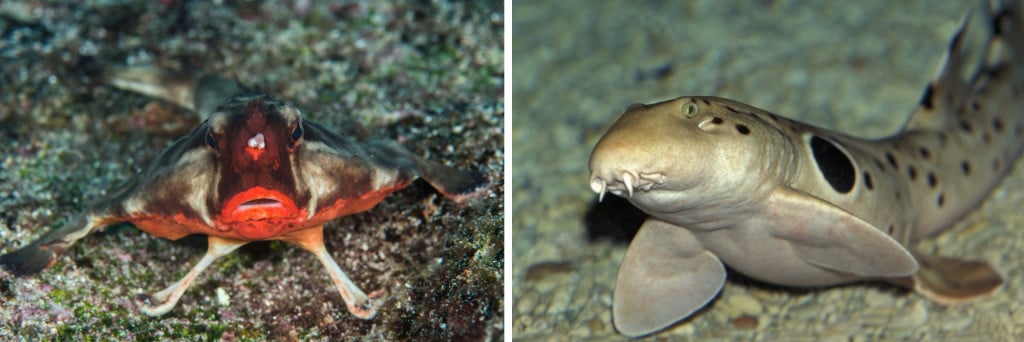
Epaulette sharks (Hemiscyllium ocellatum) call the shallow reefs home. They use their muscled and paddled pectoral fins, along with their lengthened caudal or tail fins, to walk.
With superpowers like the ability to sustain themselves in oxygen-deprived areas for nearly two hours, these sharks can hold their breath longer than you or I could in scuba suits. This tolerance is possible because their heart rate drastically increases under low oxygen conditions. This ensures that blood flow reaches the more vital areas of the brain, aiding the nerves and muscles to continue their function, despite oxygen deprivation.
A Final Word
In fish, walking has independently evolved several times; however, only a small number of the 30,000 known species of fish can actually “walk.” That said, the fact that they can only strengthens the hypothesis that all life forms emerged from the water. During the long journey of evolution, one of these fish made the transition to land, evolving into the lineage of land animals (including you and me) that we still see today!
References (click to expand)
- King, H. M., Shubin, N. H., Coates, M. I., & Hale, M. E. (2011, December 12). Behavioral evidence for the evolution of walking and bounding before terrestriality in sarcopterygian fishes. Proceedings of the National Academy of Sciences. Proceedings of the National Academy of Sciences.
- Triques, M. L., & Christoffersen, M. L. (2009). Exaptations in the conquest of land by Tetrapoda. Gaia Scientia, 3, 69-74.
- Lauriano, E. R., Faggio, C., Capillo, G., Spanò, N., Kuciel, M., Aragona, M., & Pergolizzi, S. (2018, March). Immunohistochemical characterization of epidermal dendritic-like cells in giant mudskipper, Periophthalmodon schlosseri. Fish & Shellfish Immunology. Elsevier BV.
- Al-Behbehani, B. E., & Ebrahim, H. M. (2010). Environmental studies on the mudskippers in the intertidal zone of Kuwait Bay. Nature and Science, 8(5), 79-89.
- Al-Kadhomiy, N. K., & Hughes, G. M. (1988, August). Histological study of different regions of the skin and gills in the mudskipper,Boleophthalmus boddartiwith respect to their respiratory function. Journal of the Marine Biological Association of the United Kingdom. Cambridge University Press (CUP).
- EM Standen. (2014) Developmental plasticity and the origin of tetrapods. Texas A&M University
- Sopinka, N. (2015, March 4). Living Fossil Fishes. Fisheries. Wiley.
- J Briones-Mendoza. New finding and description of the Galapagos batfish, .... Hers
- BV DICKSON. (2018) Early Vertebrate Evolution How (and why) fins turn into limbs. Cambridge University Press
- Porter, M. E., Hernandez, A. V., Gervais, C. R., & Rummer, J. L. (2022, July 27). Aquatic Walking and Swimming Kinematics of Neonate and Juvenile Epaulette Sharks. Integrative and Comparative Biology. Oxford University Press (OUP).
- Renshaw, G. M. C., Kerrisk, C. B., & Nilsson, G. E. (2002, February). The role of adenosine in the anoxic survival of the epaulette shark, Hemiscyllium ocellatum. Comparative Biochemistry and Physiology Part B: Biochemistry and Molecular Biology. Elsevier BV.
- How fish evolved to walk — and in one case, turned into .... Down to Earth
- Doyle, S. (2004). ‘Walking’sharks: evolution in action?. Zoology, 107, 111-120.

